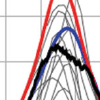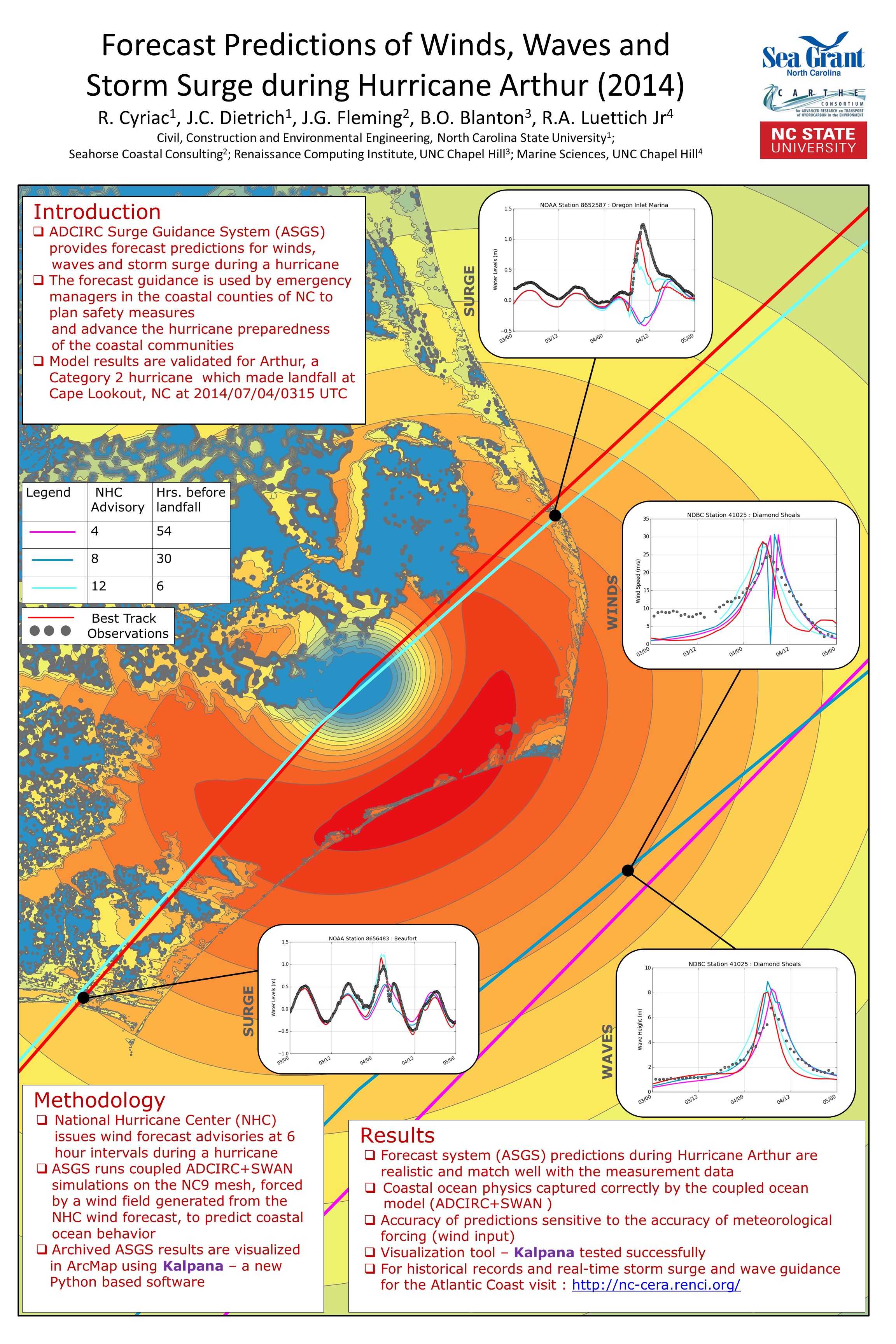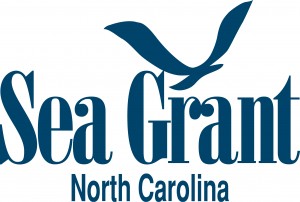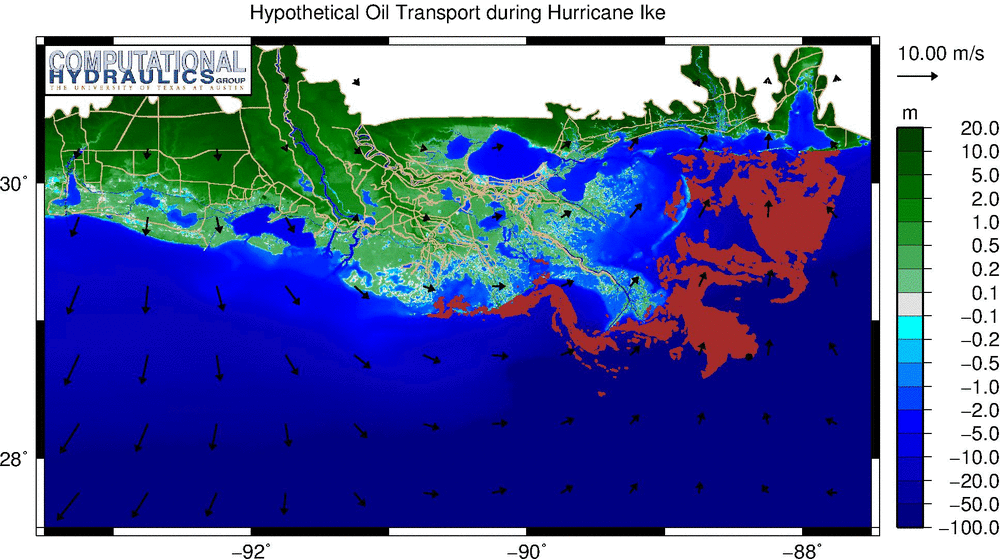Category Archives: Software
Conference: SIAM CSE 2015
+ Presenter, if other than first author.
News: Developing Storm Surge Visualization
Developing Storm Surge Visualization
When tropical storms approach, local, state and federal emergency managers seek predictions of storm surge and coastal flooding. In a project supported by NC Sea Grant, Dr. Casey Dietrich and Ph.D. student Rosemary Cyriac are improving the dissemination of flooding predictions to end-users by producing predictions in popular file formats. The Coastal Emergency Risk Assessment (CERA, http://nc-cera.renci.org/) provides a Web-based interface for visualizing surge predictions from computer models. Dr. Dietrich’s team is working with emergency managers in North Carolina’s coastal counties and with other decision makers. Results from daily model simulations are sent to these individuals, and they are widely used to predict inundation and flooding levels. Such predictions are also needed for engineering design and evacuation decisions. Model outputs are converted into formats compatible with commonly used visualization software, such as ArcGIS and Google Earth. By providing predictions to local emergency managers in a useful format, the information can be more easily integrated with other data, thereby making the information more accessible to those who most need it.
Poster: NCSU Symposiums 2015
R Cyriac, JC Dietrich, JG Fleming, BO Blanton, RA Luettich, C Kaiser. “Forecast Predictions of Winds, Waves and Storm Surge during Hurricane Arthur (2014).” Environmental, Water Resources and Coastal Engineering Research Symposium, North Carolina State University, 06 March 2015.
Seminar: Old Dominion University
News: Developing Storm Surge Visualization
Picture This: Developing Storm Surge Visualization
When a tropical storm or hurricane develops in the open ocean, the National Hurricane Center, known as NHC, issues advisories that anticipate the track and intensity of the wind field. These advisories predict when and where the hurricane is expected to make landfall, even when the storm is far away from the coast.
This information serves as an input for the ocean model, which then predicts the water levels or storm surges, and wave heights created by these winds at various locations along our coastline for the coming days. These results will convey a greater meaning to the end user when visualized properly. The chief objective for our project is to improve the communication of these model outputs to the end-user by producing them in popular file formats like that of GIS based shapefiles and KMZ files used in Google Earth.
Real-Time Forecasting and Visualization of Hurricane Waves and Storm Surge Using SWAN+ADCIRC and FigureGen
 Storm surge due to hurricanes and tropical storms can result in significant loss of life, property damage, and long-term damage to coastal ecosystems and landscapes. Computer modeling of storm surge is useful for two primary purposes: forecasting of storm impacts for response planning, particularly the evacuation of vulnerable coastal populations; and hindcasting of storms for determining risk, development of mitigation strategies, coastal restoration, and sustainability. Model results must be communicated quickly and effectively, to provide context about the magnitudes and locations of the maximum waves and surges in time for meaningful actions to be taken in the impact region before a storm strikes.
Storm surge due to hurricanes and tropical storms can result in significant loss of life, property damage, and long-term damage to coastal ecosystems and landscapes. Computer modeling of storm surge is useful for two primary purposes: forecasting of storm impacts for response planning, particularly the evacuation of vulnerable coastal populations; and hindcasting of storms for determining risk, development of mitigation strategies, coastal restoration, and sustainability. Model results must be communicated quickly and effectively, to provide context about the magnitudes and locations of the maximum waves and surges in time for meaningful actions to be taken in the impact region before a storm strikes.
In this paper, we present an overview of the SWAN+ADCIRC modeling system for coastal waves and circulation. We also describe FigureGen, a graphics program adapted to visualize hurricane waves and storm surge as computed by these models. The system was applied recently to forecast Hurricane Isaac (2012) as it made landfall in southern Louisiana. Model results are shown to be an accurate warning of the impacts of waves and circulation along the northern Gulf coastline, especially when communicated to emergency managers as geo-referenced images.
FigureGen v.49
-DSLOWREAD flag.
FigureGen is a Fortran program that creates images for ADCIRC files. It reads mesh files (fort.14, etc.), nodal attributes files (fort.13, etc.) and output files (fort.63, fort.64, maxele.63, etc.). It plots contours, contour lines, and vectors. Using FigureGen, you can go directly from the ADCIRC input and output files to a presentation-quality figure, for one or multiple time snaps.
This program started from a script written by Brian Blanton, and I converted it to Fortran because I am more familiar with that language. It now contains code written by John Atkinson, Zach Cobell, Howard Lander, Chris Szpilka, Matthieu Vitse, and others. But, at its core, FigureGen behaves like a script, and it uses system calls to tell other software how to generate the figure(s).
This example depicts hypothetical oil transport in the northern Gulf of Mexico. The oil spill is represented by Lagrangian particles and initialized with the observed conditions of 29 June 2010, but then the wind forcing of Hurricane Ike (2008) is applied. Oil is pushed into the marshes along the entire coastline of southern Louisiana.





